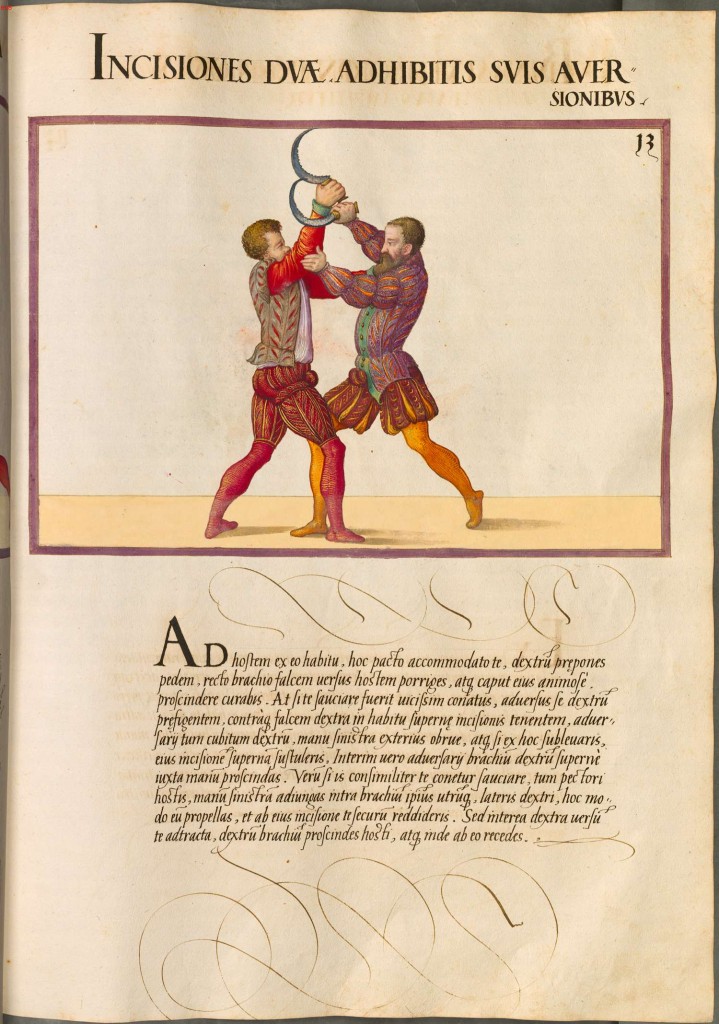Translation by Rachel Barkley
Two blows administered with their own evasions[1]
Against the enemy from this manner, accommodate yourself by this fashion. You should place forward the right foot, you should extend the sickle with the right hand, you having turned toward the enemy, and you will be mindful to plough up vigorously his head.[2]
But in turn if he has attempted to wound you, he turning his fixed forward right foot, and you holding against him the sickle in the right hand in this manner of upward incision[3], block the adversary’s right outer elbow with the left hand and if he will have lifted from here[4], you should raise up that upper incision of his. Meanwhile you should plough up from above the adversary’s right arm next to the hand.
If he attempts to wound you similarly, then you should direct your left hand to the enemy’s chest between each of his own arms to the left hand[5], you should propel him in this manner, and you, safe, should have repelled his incision of the right side. But meanwhile with your right hand having been drawn back to you, you should plough up the right arm of the enemy and thence you should retreat from him.
Notes:
[1] Translator’s Note: Or something like that
[2] Same opening as Plate 12
[3] And here we see the difference, the invitational “position of lower incision”
[4] “If he will have lifted from here” seems to assign the agency to Agente
[5] Shove him away as he tries to cut your wrist.
Interpretation by Owen Townes
Setup:
Agente:
Right foot forward
Sickle extended in middle guard
Patiente:
Right foot forward
Sickle extended in low guard
Play:
Agente:
Plough up head
Patiente:
Block outer elbow and lift
Plough up Righ wrist
Agente:
Block to chest with Left hand
Pull back Right hand
Plough up Rigt arm
Withdraw
Observation:
Pulling the right hand back while shoving Patiente away might be enough to avoid the cut. I am not convinced of the efficacy of this defense. I also don’t believe Patiente’s right arm would be available for the follow-up attack.

Leave a Reply